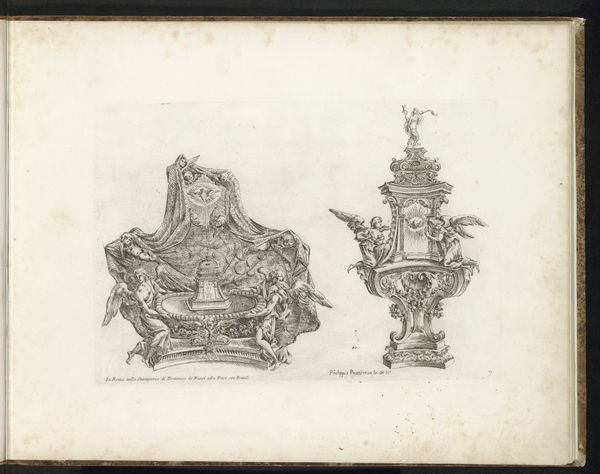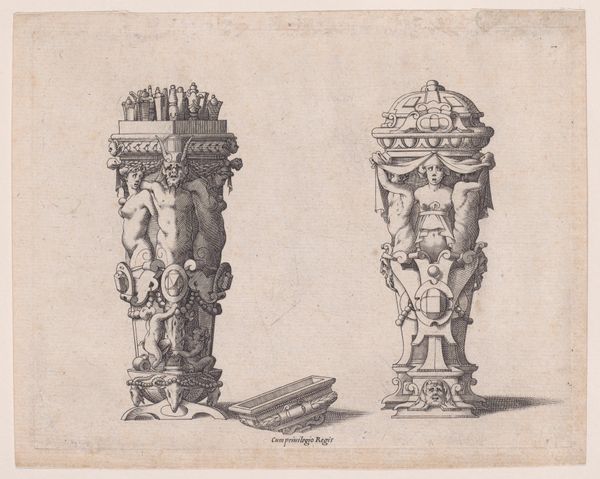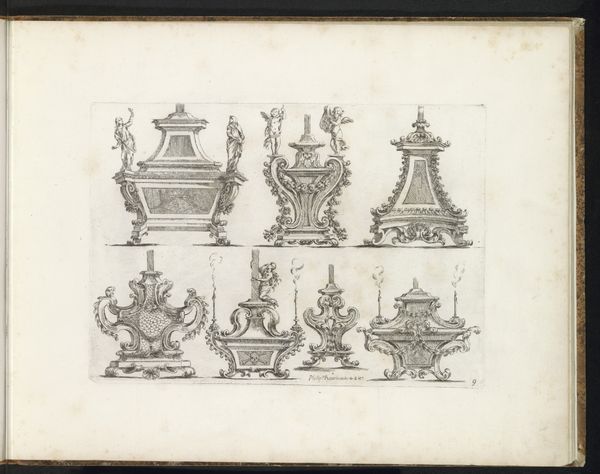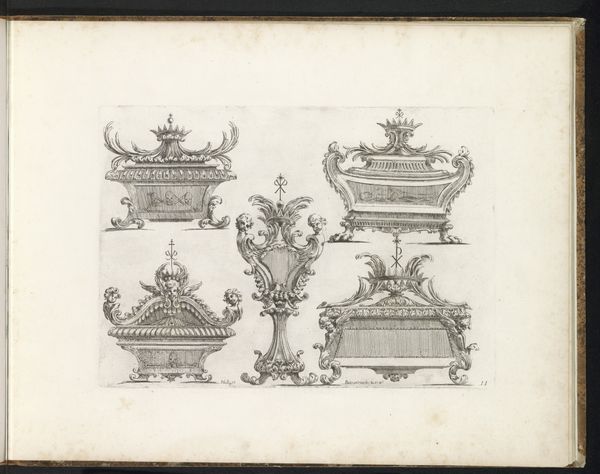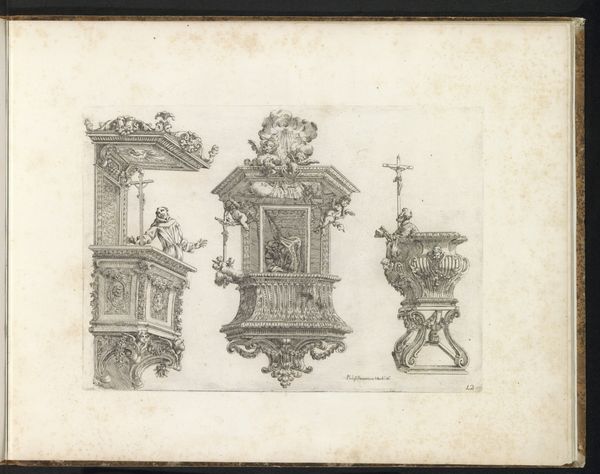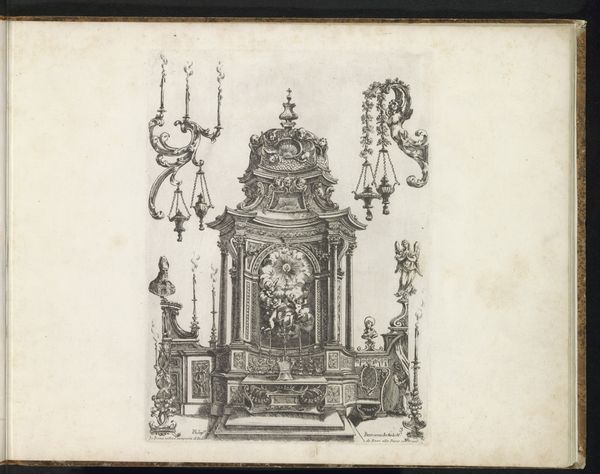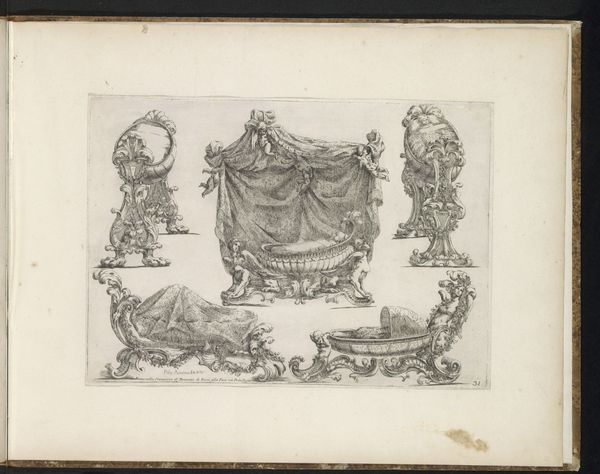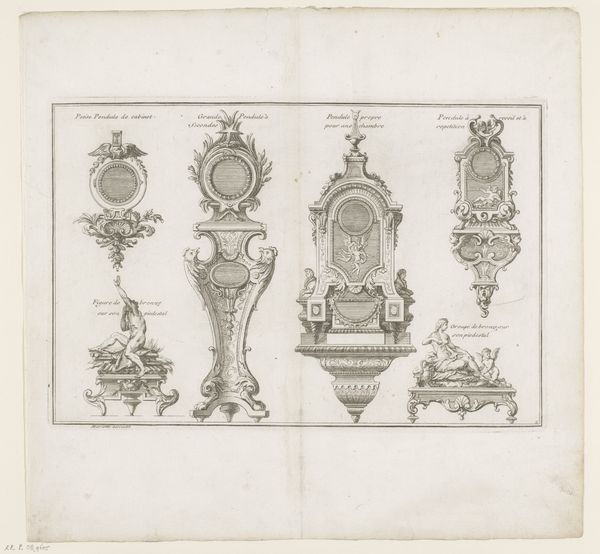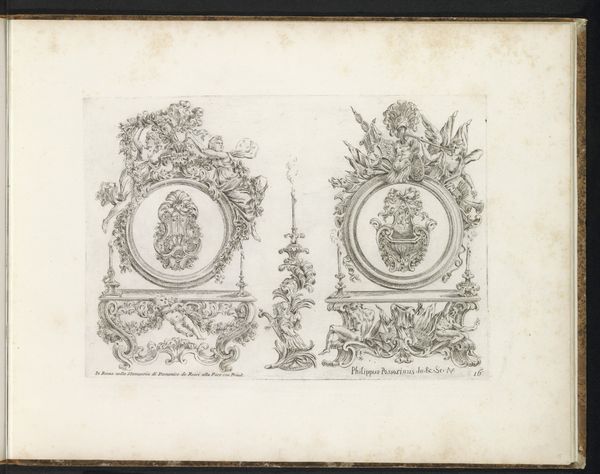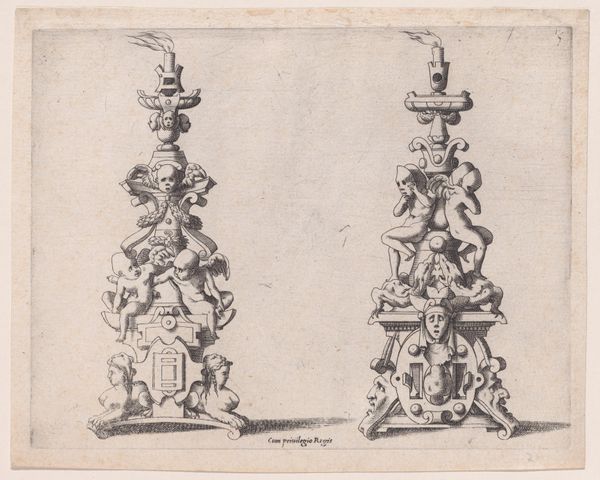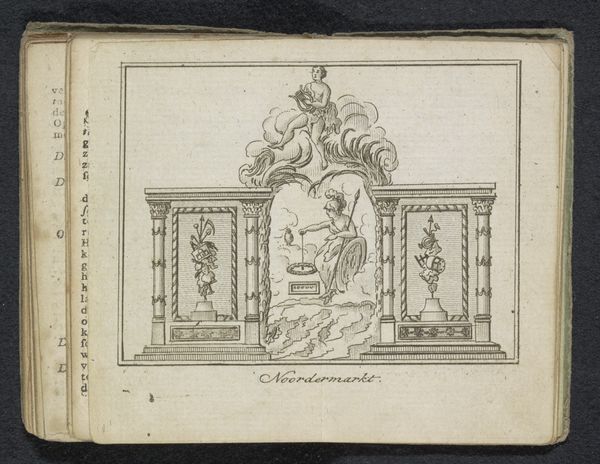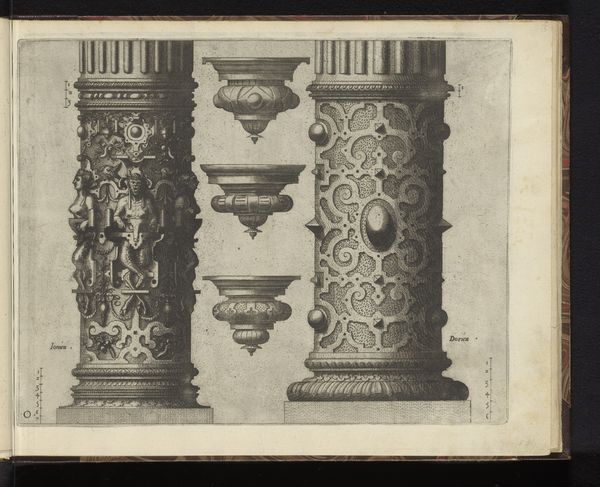
drawing, ink
#
drawing
#
toned paper
#
light pencil work
#
baroque
#
pen drawing
#
pen sketch
#
personal sketchbook
#
ink
#
geometric
#
pen-ink sketch
#
line
#
pen work
#
sketchbook drawing
#
sketchbook art
#
pencil art
#
miniature
Dimensions: height 350 mm, width 450 mm
Copyright: Rijks Museum: Open Domain
Curator: This delicate pen and ink drawing is entitled "Three Designs for an Altar with a Monstrance", created by Filippo Passarini around 1698. What do you make of it? Editor: It’s dizzying, isn't it? All of the designs are so incredibly ornate. The one in the center with all of the angels almost seems to be bursting out of the page. It gives a real sense of Baroque dynamism. Curator: Absolutely. The Baroque period embraced theatricality, and that’s evident in Passarini's designs. He’s clearly working within the conventions of Counter-Reformation art, meant to inspire awe and reinforce the Church's authority. Editor: Those angels swirling around the monstrance in the central design are quite striking. Light radiates outward, almost like a second sun. The symbolic weight of that imagery is powerful. It’s no mere decoration; it’s about conveying divine presence. Curator: It’s also interesting to see these altar designs in sketch form. This offers a glimpse into the artistic process itself, the planning stage before the grand construction. These sketches showcase a level of architectural ambition, considering the politics of image-making in the period. They were tools for negotiating power. Editor: Notice how Passarini uses line work. In some areas, it's light and feathery, especially around the clouds and drapery. In others, the lines are much darker, giving a strong sense of depth and form to the architecture. There’s definitely an emotional language here; the medium emphasizes both delicacy and monumentality. Curator: His artistic skill emphasizes how altar pieces played a vital social role at the time. Altars were a way for the Catholic church to project itself through aesthetics. Each altar served as a physical symbol that impacted socio-political and spiritual understanding. Editor: The symbolic significance can't be understated. The altars shown, especially the central one, emphasize themes of light, divinity, and sacred transformation. These images and symbolic weight evoke the traditions of cultural memory and the visual narrative of the time. Curator: I agree completely. Looking at these altar designs, I am reminded again of how art and religious and socio-political ambitions intersected in the Baroque period. Editor: I find myself pondering how powerful certain visual symbols persist in cultural consciousness.
Comments
No comments
Be the first to comment and join the conversation on the ultimate creative platform.
